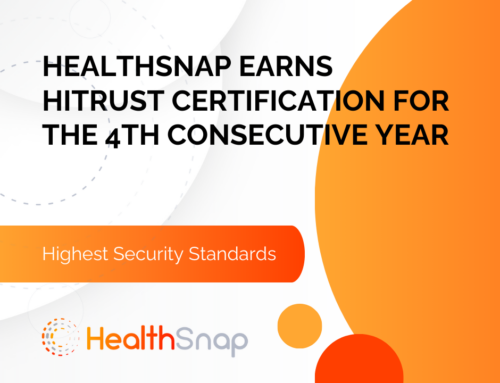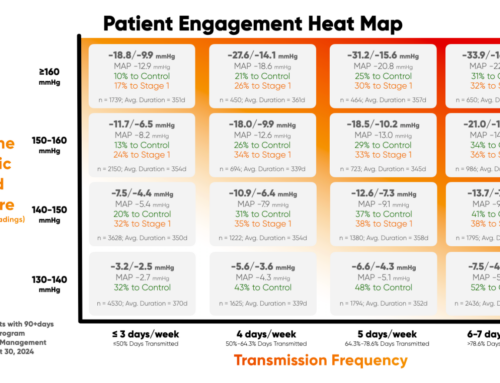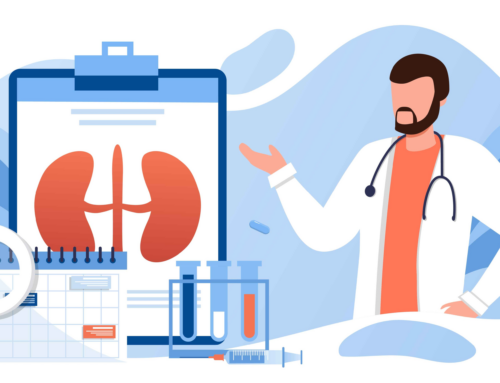The United States is economically the most powerful nation in the world, and yet a large number of Americans struggle to access quality health care and lead lives filled with a wide range of chronic diseases.
To strengthen the US healthcare system and make it more accessible and affordable to all, it’s important to recognize and promote the concept of healthcare equity. While it may sound similar to “healthcare equality,” healthcare equity has slightly different implications.
In this guide, we will look at what healthcare equity is and how it can impact the lives of ordinary Americans. We will also explore the primary reasons why virtual care management holds the key to dramatically improving health equity in the country.
Healthcare Equity vs. Healthcare Equality – What Is the Difference?
We don’t have the luxury of unlimited resources in any system, particularly in health systems. Health policymakers and medical providers have two important choices here:
- Equality – give all patients equal access to healthcare services.
- Equity – give extra attention to patients with greater/unique healthcare needs.
In healthcare equality, a hospital or care provider is expected to give equal care and attention to all patients, regardless of their race, gender identity, or sexual orientation.
However, equality does not take into account the fact that certain populations have a higher risk of certain diseases.
For example, patients from Native American and African American communities have a much higher risk of heart disease, diabetes, and other conditions. Giving these individuals the same level of attention as the general population may not be enough to adequately protect them from adverse health outcomes.
Additionally, certain sections of the population have poor health due to systemic flaws. A health equality approach does not take this into account.
This is where health equity as a policy becomes important – instead of blindly giving equal treatment to all, providers will try to give priority to patients who have severe health issues and risk factors. These can include people from the following groups:
- Low-income backgrounds
- Vulnerable age groups (children and seniors)
- Rural and underserved communities
- Racial/ethnic minority communities
With a health equity policy, providers and government agencies will try to allocate more resources to address the healthcare needs of patients belonging to these communities. It’s a way to ensure social justice and reduce widespread health disparities in our communities.
The Importance of Digital Health Equity
In the immediate response to COVID-19, virtual health or telehealth received the level of attention and significance that it had never received in the past. Disease control measures forced the healthcare system to rely more on digital pathways to deliver care to patients.
The most affected by these changes were the historically disadvantaged sections identified on the basis of various social determinants. These are communities that were already not receiving adequate access to traditional healthcare services and were in dire need of health equity.
Now with the rise of digital health care, the age-old disparities are manifesting once again due to the following restrictions:
- Lack of access to internet/mobile networks
- Lack of education/awareness about digital technologies and apps
With the rise of telehealth, we now have a new priority alongside reducing health disparities – improving access to the available technologies. Advancing health equity in digital health can provide a way forward to bridge this gap. Healthcare providers do have a better shot at it now more than ever before thanks to the arrival of expanded 5G cellular connectivity across even rural and remote communities.
Achieving Digital Health Equity Through Remote Patient Monitoring (RPM)
Remote Patient Monitoring (RPM) is a highly promising subfield of telehealth that is undergoing rapid evolution. Along with legacy telehealth methods like video/audio consultations, we now have access to powerful new tools like cellular-enabled RPM devices for remote monitoring of patient health data in near real-time.
The combination of telehealth and RPM technologies gives a health system the chance to deliver health care more effectively and affordably to all patients, regardless of their location. RPM empowers patients to have better control over their health, and reduces the burden on the health system by minimizing the need for in-office visits.
For patients with significant mobility challenges as well as those at a higher risk of hospital infections due to their chronic conditions, RPM technology is a transformative tool. Moreover, busy patients and patients with financial limitations don’t have to worry about missing work for a visit to a hospital or clinic, or pay for other expenses related to transportation, childcare, and more.
Let’s take a closer look at some of the ways in which modern telehealth, RPM and Chronic Care Management (CCM) can help a health system to advance equity among all patients.
Access to Health Care Anytime, Anywhere
RPM devices with cellular connectivity allow providers to always keep a close eye on the vital signals of their patients, even in outpatient settings. In the past, you could only achieve this by keeping a patient in a hospital and having a care team in close proximity.
Now, a virtual care manager can check the vitals of a patient at any time, whether they are in a rural community or an urban area, with just a few clicks on a computer. If there is any change in the condition, the provider can significantly improve the health outcomes of the patients by promptly adjusting the treatment plan.
Improve Health Awareness and Literacy
Patients are often not very communicative in a hospital setting. They may shy away from asking any questions or voicing their concerns. But with telehealth, RPM and Chronic Care Management (CCM) they can ask any question to the healthcare providers from the comfort of their homes. Healthcare organizations can also send relevant and targeted educational material to patients via portals, emails, texts, and other digital avenues as part of awareness campaigns.
More Reliable Connectivity
In the past, digital health/telehealth initiatives suffered due to a lack of access to smartphones, WiFi, and broadband networks, particularly in rural areas and economically challenged communities. The arrival of cellular-enabled RPM solutions is a game-changer that promises to improve equity.
We now have the option to provide remote-monitoring health devices that do not require WiFi or broadband – instead, they come with built-in support for cellular networks. Patients don’t need to configure the devices – everything works out of the box, with 24×7 support from the RPM provider available in case anything goes wrong.
Better Access to Clinical Trials
Clinical trials of new medicines often provide a ray of hope to patients suffering from debilitating conditions or terminal illnesses. And the organizations conducting the study need eligible patients to verify the validity of the treatment.
Geographical barriers prevented access to these trials for many eligible patients from remote locations. With RPM, organizations can now conduct decentralized trials and still get access to reliable patient data and retain monitoring capabilities. And patients can participate in trials from home.
RPM Reduces the Care Gap With a Focus on Continuous Care
Exposure to viral and bacterial infections is more dangerous for patients suffering from chronic diseases like diabetes, hypertension, heart disease, and other conditions because of an increased risk of complications, hospitalizations, ICU admissions, and mortality. This presents an unprecedented challenge for providers trying to deliver adequate care to vulnerable communities with limited access to health care.
Patients from these communities often have limited or no medical coverage, are less likely to make annual health visits, and lack any access to a regular primary care physician. As a result, they are more likely to fall ill and experience adverse health outcomes due to a lack of proper treatment.
The traditional approach of episodic care is grossly inadequate in covering the healthcare needs of these patients. Remote Patient Monitoring (RPM) technology offers an opportunity for more proactive, continuous care in near real-time through remote monitoring at home, with occasional visits to the clinic/hospital only when unavoidable.
This approach helps providers anticipate adverse outcomes and provide timely and preventative care, while at the same time reducing the patient load at hospitals. It is a win-win situation, as more people get access to affordable care and hospital beds are freed to focus on patients who need it the most.
RPM Benefits for FQHCs Focused on Health Equity
Federally Qualified Health Centers (FQHCs) perform a vital function in our healthcare system, providing a safety net for patients lacking health insurance and those located in remote rural areas. FQHCs and Rural Health Centers (RHCs) that furnish Principal Care Management (PCM) services bill the general care management HCPCS code G0511, either alone or with other payable services on an RHC or FQHC claim.
The payment rate for HCPCS code G0511 is the average of the national non-facility physician fee schedule payment rate for care management and general behavioral integration codes (CPT codes 99484, 99487, 99490, and 99491) and Principal Care Management (PCM) CPT codes 99424 and 99426. G0511 – All care management codes for FQHCs General Care Management replace PCM, TCM, CCM, behavioral health integration.
The experience of Outer Cape Health Services, an FQHC community health center in Harwich Port, MA, is an excellent example. Using HealthSnap’s RPM solutions, Outer Cape was able to remotely manage hypertension among multiple underserved communities near Cape Cod with just 18 clinicians. The data collected through HealthSnap RPM devices enabled Outer Cape to make more accurate clinical decisions and improve health outcomes of their patients.
Let HealthSnap Be Your Gateway to Providing Proactive Patient Care and Greater Health Equity to Patient Populations
HealthSnap is a trusted name in integrated virtual Care Management Platform technologies. We lead with breakthrough innovations in Remote Patient Monitoring (RPM), including patented and patent-pending tools that predict and generate reimbursement reports on RPM.
We help healthcare organizations improve patient outcomes, reduce utilization, and diversify revenue streams. From chronic disease-agnostic Remote Patient Monitoring (RPM) and Chronic Care Management (CCM) to AI-guided care coordination, virtual care delivery, automated care management billing, population analytics – and so much more – HealthSnap is the simplest way to manage chronic conditions remotely.
HealthSnap’s virtual Care Management Platform includes three unique components: 1. An EHR-Integrated Care Management Platform 2. Pre-configured and cellular-enabled health devices 3. Care Management Services
Our cellular-enabled remote monitoring devices have been designed to provide a hassle-free user experience for patients with chronic conditions, seniors, and patients without access to WiFi/broadband connectivity. To learn more about our virtual Care Management Platform, give our team a call at 888-780-1872 or fill out this online contact form.






